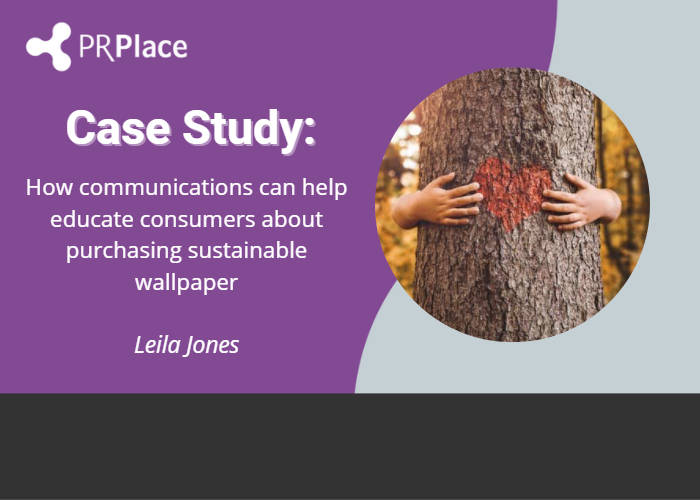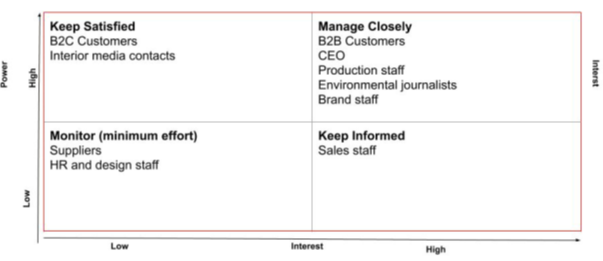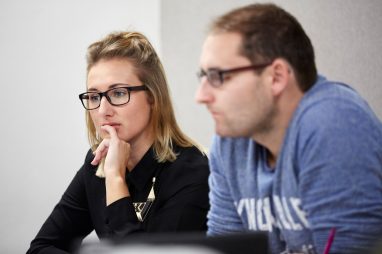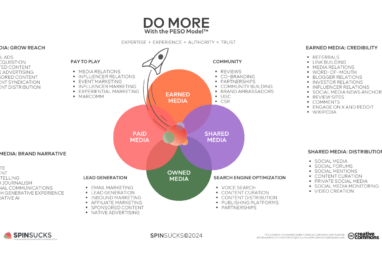How communications can help educate consumers about purchasing sustainable wallpaper

About the author
Martin Flegg Chart.PR FCIPR is a PR professional specialising in internal communication. He is also a guest tutor and assessor for PR Academy on CIPR qualification courses.

This case study is based on a CIPR Professional PR Diploma assignment by Leila Jones, edited by Martin Flegg.

MuralsWallpaper is an interiors brand, part of the surface design company Milexa Group. The brand designs and manufactures innovative wallpaper solutions for both homes and businesses. Part of the brand’s ethos is to responsibly produce wallpaper, minimising the impact on the environment.
MuralsWallpaper’s purpose is to become the world’s leading online brand for responsibly produced wallpaper design by 2023. The business focus is on using sustainable paper and environmentally friendly inks, and a recycling and no landfill policy coupled with sourcing as much renewable energy as possible. The organisation therefore has a unique selling proposition. Its wallpaper is a sustainable product compared to other wallpaper brands, but sustainability does not form a major part of the marketing or PR strategy.
The sustainability market is growing considerably, with new digital-first sustainable interiors brands becoming established, with opportunities to reach new types of consumers.
However, MuralsWallpaper is not communicating about its sustainability credentials clearly, so the opportunity to take advantage of the growing market for sustainable products is being overlooked.
Capitalising on the sustainability market could increase sales and introduce the brand to a new range of consumers. Furthermore, educating consumers about buying responsibly produced wallpaper may have other benefits, such as justifying the product’s higher price point to consumers.
Communications can play a key role in educating consumers and other stakeholders, by developing key messages and delivering them to the right audience at the right time.
Research and key findings
To understand the role strategic communications could play in educating consumers to make sustainable buying decisions, MuralsWallpaper needed to have greater insight into the operating environment. The research analysis aimed to achieve the following objectives:
- To investigate the external environment, including the current market for sustainable products.
- Profile and analyse the most important stakeholders for the project, and identify a key audience to target with communications messaging.
- Examine the current brand strategy to seek out gaps which could be filled by communications.
The research focused on internal and external data sources, the identification and mapping of stakeholders, outlining target demographics, market research, case studies on other brands, SWOT and PESTLE analysis, and academic theories on corporate social responsibility and key messages.
Opportunities exposed by the PESTLE and SWOT analyses
The PESTLE and SWOT analyses both helped to expose the opportunities to begin to address the issue.
At the time of the research MuralsWallpaper already sourced sustainably paper and used water-based inks, plus packaging materials were recycled. Designs were created in house and made to measure which overall creates less waste than traditional wallpaper and reduces emissions from shipping globally. External environmental factors such as the overall issue of deforestation and recycling could also be taken into account when designing the project’s key messages.
Technologically, MuralsWallpaper was in a strong position with a website allowing customers to purchase from anywhere in the world.
The brand also had good existing relationships with interiors journalists which could be used to communicate key messages, was undergoing BCorp certification, was listed at 39 in the Sunday Times Fast Track 100, and had many new products in development.
Corporate Social Responsibility commitment
Dauncey devised a scale of ‘Shades of Green’ to assess how committed a business is to being more environmentally friendly. According to this scale, at the time of the research, MuralsWallpaper was at the level of ‘Green Soul’ – the overall goals of the organisation consider how they will benefit the planet and pursue higher goals. This demonstrated that the brand’s commitment to being environmentally responsible went beyond the remit of just being a marketing tactic.
This part of the research concluded that the opportunities identified by the PESTLE and SWOT, and the organisations CSR commitment, positioned MuralsWallpaper well to become a future industry leader in the sustainable wallpaper market, with the help of strategic communications and PR activity.
The state of the sustainability market
The research found that the sustainability market was growing. In the US, the biggest market for MuralsWallpaper, sales of sustainable products were projected to reach around $150bn in 2021 according to Statista. 2020 product launches by interior brands focused on sustainability – French Connection launched rugs made of plastic, whilst Heals sold a 100% recycled sofa, according to an article by Homes and Gardens. There was also a keen appetite from consumers too, as Nielsen’s 2018 survey, Unpacking the Sustainability Landscape, found that 73% of consumers would change their consumption habits to reduce environmental impact. Furthermore, the survey discovered that 38% of consumers were willing to pay a higher price for products made with sustainable materials.
In an article published in Harvard Business Review (HBR), ‘The Elusive Green Consumer’, the authors found that whilst 65% of consumers wanted to buy from a purpose driven brand, only 26% actually did so. They also found that behavioural science was useful for designing key messages and could be helpful to understand the wants and needs of the market and make sustainability irresistible.
The main conclusion from this part of the research was that MuralsWallpaper would not only need to raise awareness, but also change behaviour so that consumers actually purchased its sustainable wallpaper. Using simple key messages underpinned by behavioural science to influence the right audiences could help to achieve this.
Mindful consumption as a trend
At the time of the research, Customer Focus was one of the six Milexa Group pillars supporting the company values – ‘creating a wow customer experience that is empathetic and starts with the customer’.
According to Sheth, in a 2009 journal article titled ‘Mindful Consumption – A Customer Centric Approach to Sustainability’, nurturing the concept of mindful consumption is the key to placing the customer at the heart of a sustainability strategy. Mindful consumption can be summarised by the action of moderating unnecessary consumption by reinforcing a mindset of caring for self, nature and community.
The clothes brand Patagonia is one of the most famous purpose-driven brands in the world. From using Patagonia as a case study in the research, it was evident that consumers are willing to give their money to sustainable practices, if it is communicated in the right way.
Patagonia’s communication strategy is an example of best practice for purpose driven brands such as MuralsWallpaper. Adam Fetcher, the brand’s communications director stated four key points:
- Let brand communications be human,
- live and breathe your mission,
- make the customers part of your mission and finally,
- encourage customers to become advocates.
To summarise, including the customer in your company values can influence their behaviour.
It was concluded that the MuralsWallpaper purpose, of enriching environments for the good of people and the planet, positioned it well as a brand in the context of mindful consumption and this was an opportunity to get consumers involved in its mission.
Stakeholders and target audiences
MuralsWallpaper has many different stakeholders, but it was recognised that not all of them would be relevant for the task of educating consumers on purchasing responsibly produced wallpaper. To understand which customers to target for future communications about sustainable wallpaper, it was important to firstly map out the stakeholders. The brand stakeholders were identified as:
- B2C Customers – Existing and potential customers in the process of purchasing.
- B2B Customers – Stylists, Interior Designers and other businesses.
- Media – Influencers, Journalists, Editors and Photographers.
- Employees – CEO, HR, Sales, Brand and Production.
- Government – Local council.
- Suppliers – Paper, ink.
A Power/Interest matrix was used to identify and analyse the important and relevant stakeholders. In the context of educating consumers about sustainable wallpaper, it was recognised that each stakeholder would have a different interest in the brand. For example, customers would be focused on product quality and value for money. The sales team on customer satisfaction, whilst the brand team would mostly care about the reputation of MuralsWallpaper.

The matrix helped to identify the most important stakeholders which included customers, staff, environmental journalists and interior media contacts.
Analysing the customer stakeholder group
Internal customer data was used to further identify a specific target customer group, so that future strategic PR and communications activity could be focused on the right demographic using the right channels.
Website and social media
In the UK, 66% of the current website users were found to be female, with the most common age being 25-34 (30% of users). In the US, 74% of sessions came from female users, with the most common age bracket being 25-34 (32%). 85% of website users accessed the site by mobile, and Pinterest was the main driver of sessions at 46% in the UK and 67% in the US. Facebook was the main source of referral traffic for customers aged 35+ at 25%.
This data provided information on which channels the audience was most likely to engage with.
Generational contexts
Research by First Insight found that Generation Z, aged 22 and under, were most likely to want to pay more for sustainable products compared to other demographics. According to the survey, those in the ‘boomer’ bracket (aged 56-74) were more likely to hold out on buying sustainable products.
However, across all age groups, the findings showed that expectations that brands should be sustainable were increasing. Interestingly, all ages ranked quality over environmental concerns when asked why they shopped with sustainable brands.
Whilst generation Z was most likely to pay more for sustainable products, the average age of a home buyer in the UK was found to be 34 which aligned with the current most common existing customer age bracket. The target customer audience was therefore concluded to be:
- Men and women, buying a home or redecorating with disposable income, aged 25-44. By focusing on this specific group, the brand could capture customers at all parts of their journey – saving for a house, buying a house and redecorating when they had lived there for a while.
- Classed as a latent public – these customers know that sustainability is a pressing issue, but they didn’t yet recognise how MuralsWallpaper could help – by providing them with a responsibly produced wallpaper solution.
Primary and secondary publics
When researching who to target with key messages, it was also useful to separate the publics into primary and secondary, as recommended by Smith in Strategic Planning for Public Relations. Primary publics are key groups that are interacting with the organisation, whilst secondary publics are intercessory groups who can influence the primary publics.
- The primary public emerging from the research were customers aged 25-44 with disposable income who are buying a house or redecorating. These customers are latent – they share the issue of sustainability, but they don’t yet recognise the situation. They could also be referred to as embryonic.
- The secondary publics could act as the go-between for MuralsWallpaper and the customer group identified as the primary public. Secondary publics identified by the research were the media and influencers, such as print media, special interest magazines (interiors/house building), electronic media and bloggers. The media could also be referred to as an enabler. The media is an aware public – they know about the issue of sustainability, but they don’t discuss the issue in detail.
It was concluded from this part of the stakeholder analysis that both the media and customers would require different types of communication for any future PR activity about sustainable wallpaper to be successful.
Recommendations and objectives
The limitations of the available data used in the analysis identified that MuralsWallpaper was lacking audience insight beyond the Google Analytics data utilised. Further in-house audience research was therefore recommended. The aim of this would be to confirm that the primary public (customers aged 25-44) actually did care about sustainability and obtain up-to-date opinions.
Overall, the research identified five key objectives for future PR and communications activity to position MuralsWallpaper as a market leader for sustainable wallpaper products, and help the organisation achieve its purpose of becoming the world’s leading online brand for responsibly produced wallpaper design by 2023.
Objectives for future PR and communications activity:
- To raise awareness of sustainable wallpaper – measured by an audience survey before and after the campaign.
- To educate the audience on the importance of sustainability in interiors over the campaign period – measured by using audience research before and after the campaign.
- To increase the sales conversion rate by 20% by the end of the campaign period – measured by Google Analytics data.
- To position MuralsWallpaper as a thought leader on sustainability in interiors – measured by counting the number of mentions of the brand alongside the issue over the campaign period, and audience perception surveys.
- To become the go-to organisation for media comment on sustainability issues in interiors for the campaign period and six months afterwards – measured by the number of inbound media enquiries and successful commentary placements.
Leila Jones – What I learnt from completing my assignment
“Completing my assignment made me much more aware of sustainability as an issue which should be addressed by organisations and businesses.
Sustainability is not just a trend. It is something which people are now really taking into consideration in their buying decisions and the brands that they follow.
Strategic public relations can help organisations and brands, which have sustainability built into their products and services, explain this to their stakeholders to both build their reputation with consumers and expand their market share.
This was a huge opportunity for the company I was working for, when I completed my assignment, to go beyond just marketing wallpaper designs, and I was able to share my research findings with the wider communications and PR team.
Since completing my assignment, I’ve now moved on to a new role as a PR Strategist with a content marketing agency. I think being on the course really helped me to get my new job. It was certainly something we talked about at my interview and the panel were really interested in hearing about what I was working on and what I was learning.
The PR roles I’ve had before this latest job have been very SEO heavy and quite tactical with a digital focus on getting links. I studied PR at university and I think that there is real value in blending traditional and digital PR together into a more holistic approach. I’m now focusing much more on brand awareness, reputation and supporting the internal comms teams with corporate communications. Completing the course has really helped with taking that broader approach.
Some of the theory we covered on the course was very familiar from my university days, but in contrast, the PR Diploma has been much more about how to apply theory to practice, and that has been really useful. Situational analysis using things like the SWOT and the PESTLE approaches, stakeholder mapping and the planning models have been something which I’ve immediately been able to use in my day-to-day work. Particularly when I’m working with new clients, mapping out all the different factors and then taking them into account to help shape the planning and ideas to include in their PR campaigns.
From a personal point of view doing the PR Diploma course and completing my assignments has been a real boost to my confidence. Getting back into writing professionally and then receiving great feedback on my assignments has been uplifting, and I’ve proved to myself that I can overcome personal challenges in my studies to achieve the things I want to.”


